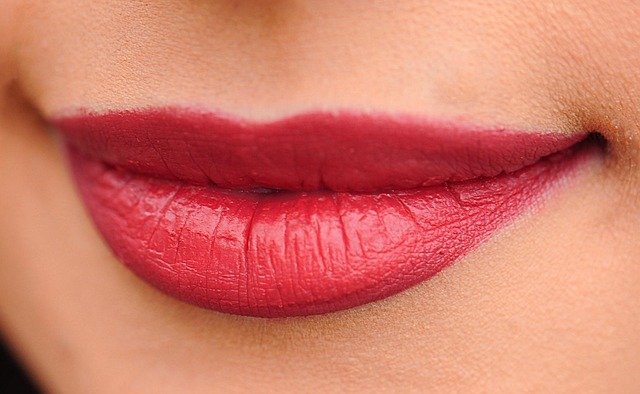Decoding the Science Behind Long-Lasting Lipstick
The quest for the perfect, long-lasting lipstick has been a beauty obsession for decades. From ancient Mesopotamian women crushing gemstones to create lip tints to modern-day chemists formulating innovative lip products, the journey has been nothing short of fascinating. Today's long-wearing lipsticks are marvels of cosmetic engineering, combining cutting-edge technology with age-old beauty wisdom. These products promise to withstand eating, drinking, and even kissing, while maintaining vibrant color and comfortable wear. But what exactly makes these lipsticks so resilient? The answer lies in a complex interplay of chemistry, physics, and materials science that has revolutionized the beauty industry.

The Role of Polymers in Long-Lasting Lipsticks
At the heart of most long-wearing lipsticks are specialized polymers. These large molecules form a film on the lips, effectively trapping the pigment in place. Silicone-based polymers, such as dimethicone and trimethylsiloxysilicate, are particularly popular due to their ability to create a flexible, breathable barrier that resists transfer. These polymers also contribute to the smooth, velvety feel that many long-wear lipsticks boast.
Volatile Solvents and the Dry-Down Process
Another key component in long-lasting lipsticks is the use of volatile solvents. These ingredients, often isododecane or cyclopentasiloxane, help to spread the product evenly on the lips. As the solvent evaporates, it leaves behind a concentrated layer of pigment and film-forming agents. This process, known as “dry-down,” is crucial for achieving that locked-in color effect that long-wear lipsticks are known for.
The Science of Color Retention
Color retention in long-wear lipsticks isn’t just about keeping the pigment in place. It also involves maintaining the vibrancy and trueness of the color over time. This is achieved through a combination of carefully selected pigments and specialized coating technologies. Many modern formulations use treated pigments that are encapsulated or coated with materials like silica or polymers. These treatments help to prevent the pigments from interacting with the skin’s natural oils or environmental factors that could cause color changes.
Balancing Wear and Comfort
One of the biggest challenges in formulating long-lasting lipsticks is achieving durability without sacrificing comfort. Early long-wear formulas were often criticized for being drying or feeling tight on the lips. Modern formulations address this issue by incorporating hydrating ingredients like hyaluronic acid, vitamin E, and various plant-based oils. These moisturizing agents are carefully balanced with the film-forming polymers to create a formula that feels comfortable throughout the day.
The Role of Adhesion Promoters
Adhesion promoters are another crucial component in long-lasting lipsticks. These ingredients help the lipstick adhere more effectively to the lips, improving its overall wear time. Common adhesion promoters include materials like hydrogenated polyisobutene and various acrylate copolymers. These ingredients work by creating microscopic bonds with the lip surface, essentially anchoring the lipstick in place.
Innovations in Application Methods
The science of long-lasting lipsticks extends beyond just the formula itself. Innovations in application methods have also played a role in improving wear time. Liquid lipsticks, for example, often come with specialized applicators designed to deposit a thin, even layer of product. This thin application allows for better adherence and a more comfortable wear. Some brands have also developed two-step systems, where a base color is applied followed by a top coat that seals and protects the color.
The Impact of pH on Longevity
An often-overlooked factor in lipstick longevity is pH balance. The natural pH of lips can vary from person to person, and this can affect how long a lipstick lasts. Some advanced formulations now include pH-adjusting ingredients that help to neutralize the lip’s surface, creating an optimal environment for the lipstick to adhere and maintain its color integrity.
Environmental Considerations in Long-Wear Technology
As sustainability becomes increasingly important in the beauty industry, formulators are exploring new ways to create long-lasting lipsticks that are more environmentally friendly. This includes developing biodegradable film-forming agents and using naturally derived ingredients that can mimic the performance of synthetic polymers. Some brands are also focusing on creating long-wear formulas that are easier to remove, reducing the need for harsh makeup removers.
The Future of Long-Lasting Lipsticks
The science of long-lasting lipsticks continues to evolve. Researchers are exploring new technologies like microencapsulation, where tiny capsules of color or moisturizing agents are embedded in the lipstick formula, releasing over time for extended wear and comfort. Smart lipsticks that adapt to individual lip chemistry are also on the horizon, promising even more personalized and effective long-wear solutions.
In conclusion, the science behind long-lasting lipsticks is a testament to the innovation and ingenuity in the beauty industry. From advanced polymers to sophisticated pigment technologies, these products represent a perfect blend of chemistry and cosmetics. As research continues, we can expect even more impressive developments in lip color technology, pushing the boundaries of what’s possible in long-wearing makeup.




